A year ago here on Seamonster, we heard from a team of scientists who were studying the coral islands of the remote Chagos archipelago (go back and check out parts one and two of our interview to find out just how dangerous ‘Danger Island’ is and to see more photographs from that expedition).
I’m delighted to welcome back our very good Seamonster friend Professor Charles Sheppard , of Warwick University and the Chagos Conservation Trust, who has been in touch with us from Chagos to tell us about his latest expedition.
Helen – Perhaps you could start by just reminding our readers why Chagos is important?
Charles – Chagos is so important because it forms a global reference site for how coral reefs should be. While so many parts of the tropical world have become increasingly degraded, Chagos does not suffer from so many of the direct human impacts that afflict so many other places. It suffers, and has suffered, from climate change effects, but recovery here has been spectacular. It is in short one of the most striking coral reef systems left in the world and set several “world records” in terms of health, resilience, biomass of fishes and several other aspects too.
Helen – What was the main focus of this year’s expedition?
Charles – This year 14 scientists came out and covered several lines of research, all of which I have aimed to form part of an integrated scientific research plan. Several aspects of those lead on from work in earlier expeditions and a few are new. All of them are designed to help coral reef scientists, and BIOT [British Indian Ocean Territory aka Chagos Islands – HS] of course, in their understanding of how BIOT’s natural systems ‘work’ and to help BIOT manage and maintain them. Sometimes it becomes clear that, given Chagos is a good reference site for a large part of the world, that the main beneficiaries are other countries.
My own focus this year was twofold. One continued a theme I have been doing now for seven years, which is monitoring temperature. In fact I have just returned from retrieving to temperature data loggers which record temperature at intervals of two hours, at different depths of the ocean facing side of Diego Garcia atoll at 15 and 25 m deep.
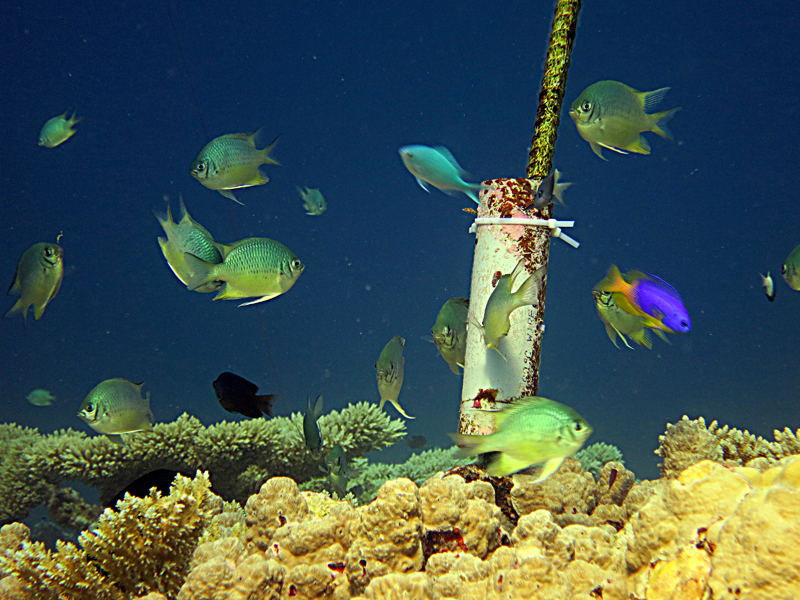
I have just finished downloading the data and will replace them, hopefully, tomorrow to continue logging temperature for another year or two. These data have proved to be enormously important in helping us to understand why the corals here seem to be very robust in the face of several aspects of climate change.
My own second line of investigation this time is on counting juvenile corals. These juveniles potentially form “the next generation” of corals. These islands depend on corals for their existence of course. Naturally, juveniles do not guarantee survival to adulthood, but the fact they are present indicate what the potential is; in many parts of the world there have been few or no juveniles for some years. There are lots of data to work up, but it is already clear that juveniles are abundant in Chagos and show very neat patterns which I shall amplify in scientific papers as soon as I can.
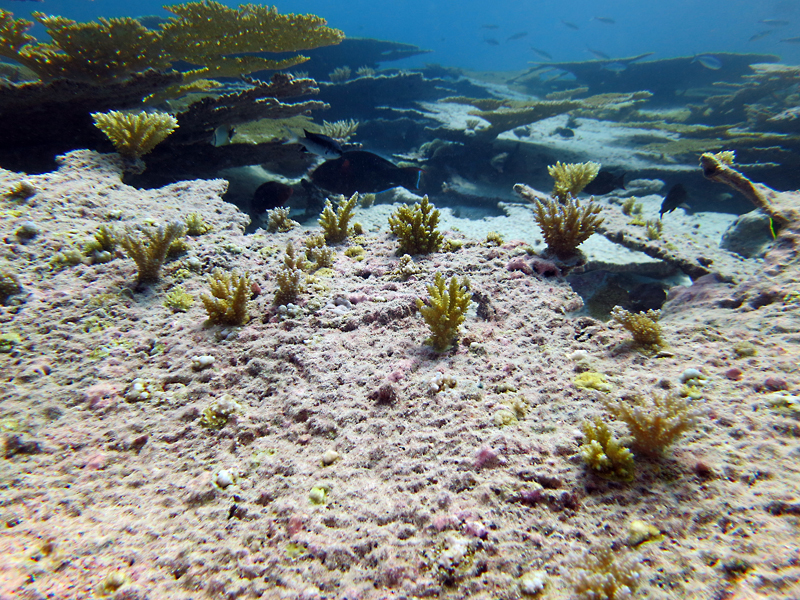
Other people focused on coral growth, habitat mapping, pelagic fish monitoring, and the genetics and connectivity of reef fish and invertebrates. Our team is also expanding work investigating the hidden cryptofauna of the reefs. These are studied by collecting some dead coral heads, followed by much sifting of samples. One of our members also deployed sets of settlement plates, which will be retrieved after one year to see what cryptic fauna settles on those. These are exactly the same design as ones deployed at many places across the Indian and Pacific oceans, so this forms a part of a much bigger project – again this will help put Chagos in its global perspective. I have always strived to try and place Chagos in a global picture.
On land, we have continued with the bird monitoring work; Chagos has 10 important bird areas concentrated on its few small islands that were not converted for coconut production 200 years ago.
Helen – Tell us about the portalab (it sounds amazing).
Charles – The portalab is not quite as fantastic as perhaps it sounds! It is a container fitted out as a lab with wet and dry benches, places for the electronics and so on. Not particularly high-tech and exotic but, believe me, it is so much better to sort samples in an air-conditioned space than it has been in the past when we have had to do this on the exposed back deck under the sun, dripping sweat into samples! I’m sure those working on the small cryptic fauna have appreciated it the most.
The sorts of animals they are finding encompass many of the phyla found in the sea, but their focus at the moment is on the small crustacea. There are so many groups that, really, this needs many people from many visits to get a proper grip on the subject. After all, you have heard many times I’m sure that coral reefs are the most diverse system in the sea, yet with “only” a very few hundred species of corals, perhaps 1000 species of fish, where are all the tens of thousands of species that such an assertion would require? They are the small, cryptic species that we are now starting to make some sense of.
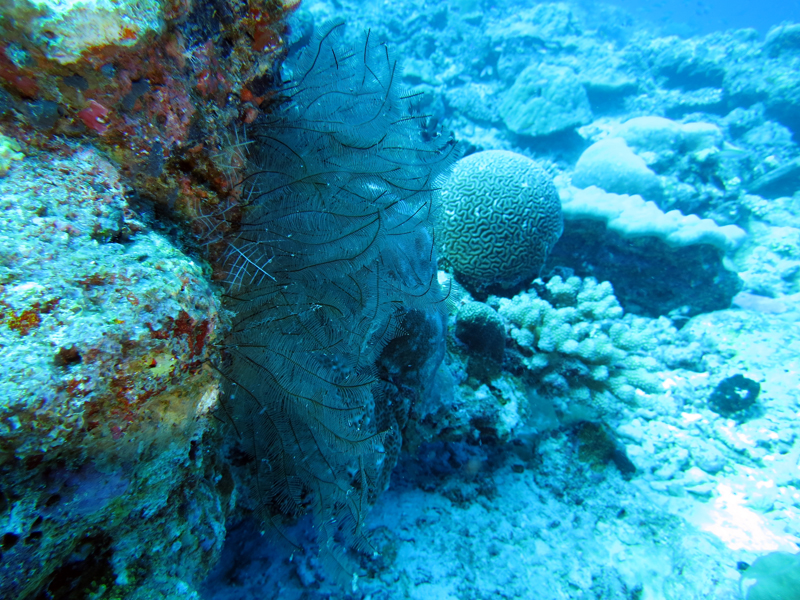
Helen – Did anything unexpected happened during this expedition?
Charles – We have had one or two surprises. One was a mass mortality of corals below 15 m deep in one atoll. I am collating data, including temperature data, on this, and am beginning to piece this together. Or at least, I think I am but it really is early days. I suspect temperature might be the cause. In the past this lagoon has largely escaped at depth, but this time may have been affected. But two puzzles are that this was not seen in other lagoons, and there was no mortality in shallow water! There are explanations, but I’d rather wait till I have done the required analysis.
Helen – Will you be going back to Chagos next year?
Charles – The present expedition was the first of a series of three. So yes – some of us, and some new people, will be returning next year. Continuity of some of the research threads is very important, and for some lines of research we have some of the longest series of observations that exist anywhere. This is important because trajectories and trends can be worked out, which is so much more informative than one off snapshots in providing information about what is going on in any ecological sense.
One thing that springs to mind is that we found last year a small area where the coral predator crown of thorns starfish had killed just about all the coral. This year we were able to document some pretty rapid recovery and, to hark back to an earlier theme, the area had lots of juveniles too, in this case the larvae for the juveniles must have come from other unaffected areas.
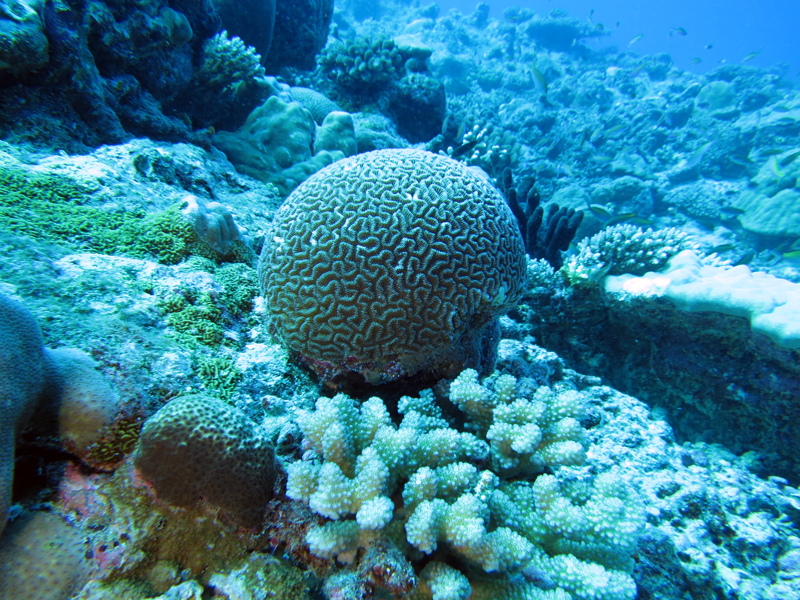
Another thing we did was to visit large seagrass beds. These were discovered only last year at the tail end of that expedition. This year about nine of us sampled, filmed, photographed this area. I suspect that much of the submerged banks support seagrasses. We just don’t know and we need to find out because these are important turtle feeding areas, and are in any case a quite different kind of habitat to the coral reefs.
Find out more about Chagos at the Chagos Conservation Trust website and the blog from this latest Chagos expedition.
Big thank you to Anne Sheppard for all these photos.
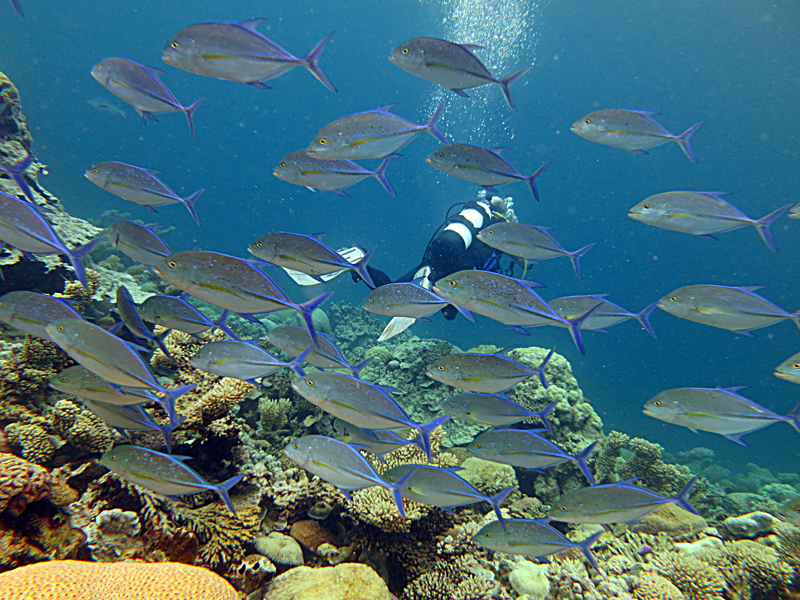
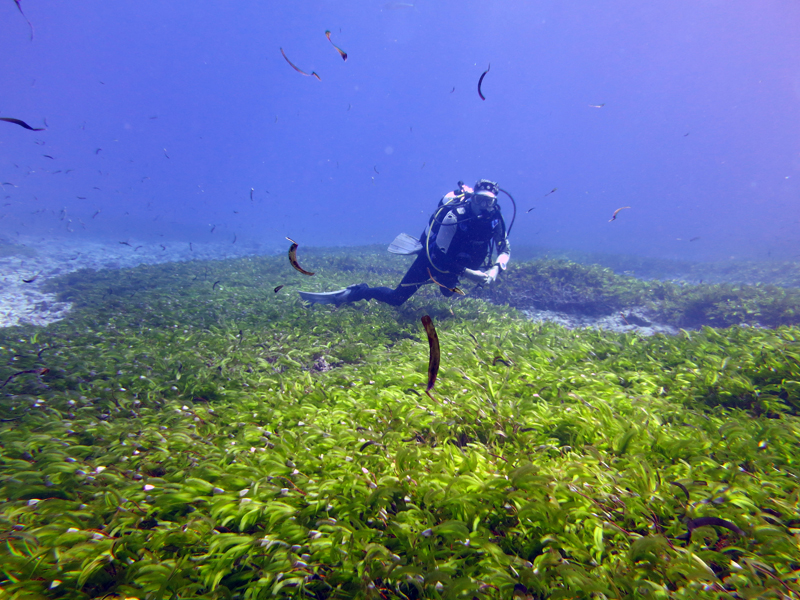
Leave a Reply